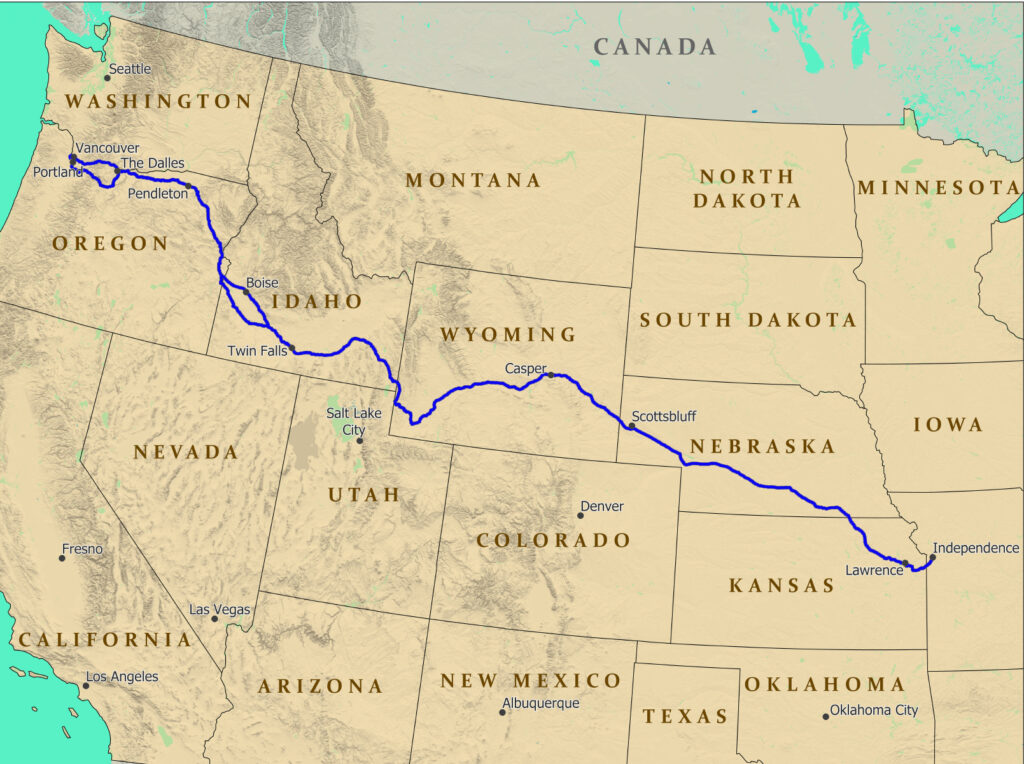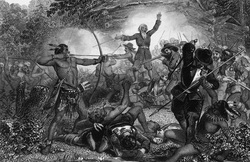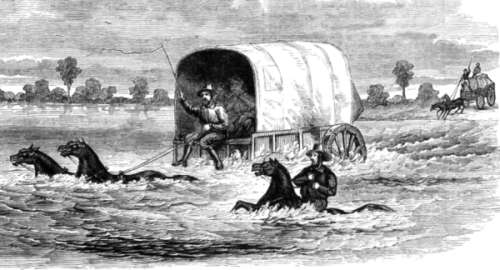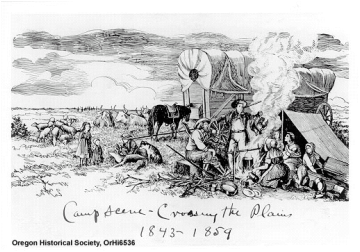You may have experienced it through the lens of the old game, but chances are you have no idea what everyday life was really like on Oregon Trail. Packing up your entire life to face a 2,000-mile stretch of death, disease, and danger, life on the Oregon Trail was a lot more exciting, and at the same time, a lot more boring than you would probably ever think. Today we are exploring what life was really like on the Oregon Trail.
The Oregon trail was 2,170 miles of danger and boredom that stretched from Missouri to Oregon. To say daily life on the Oregon Trail was difficult is a vast understatement. It was hard work and required uprooting your entire family. And deciding to venture west for new opportunities. But that didn’t stop thousands of people from hopping onto their wagons and emigrating into the vast unknown. Maybe it was a chance to start over.
Oregon Trail near Disneyland

Maybe it was the thrill of adventure, maybe it was moving away from their annoying neighbor. Or maybe it was the promise of a parcel of land double the size of Disneyland. Whatever the reason, people traveling the Oregon trail had a goal in mind, to make the journey and not to die while doing it. The Homestead Act, signed into law by Abe Lincoln himself in 1862, was also a big motivator. The act said people could claim 160 acres of land if they promised to grow crops on it.
Not a bad deal, especially if you consider the fact that it made it easier for single, widowed, and divorced women to claim land in their names what was it like? Well, let’s set a hypothetical scene. It’s the mid-19th century. Your current town on the east coast is overcrowded, and you are sick of living like a sardine pretty unhygienic. Turns out, a lot can go wrong, especially when you are traveling thousands of miles without modern medicine and infrastructure. And when we say go wrong, we mean death.
Whoever said nature was the best medicine never tried outside with just a flimsy wagon. if you died crossing the Oregon trail, 9 times out of 10 it was from some sort of disease and serious illness. Smallpox, flu, measles, mumps, and tuberculosis could jump through an entire wagon camp, and those pioneers could do little to prevent it. One of the most dreaded illnesses you could catch was cholera. It can affect someone at breakfast, and then by the time lunch rolled around, they’d be dead. Cholera, that’ll ruin an appetite.
People could only Pack the things they needed the most
If you have ever moved anywhere, you know the nightmare that goes along with deciding what to pack up, donate, or toss. Now multiply that nightmare by 1,000. If you were an Oregon Trail pioneer, you would have to pack insanely light. Typical wagons could carry 2,000 pounds, which sounds like a lot. But when you consider the fact that 1,800 pounds of that were food, you’d have to reckon with the sad reality of ditching your favorite beat-up La-Z-Boy, or else the 1800s equivalent was at that time.
Oregon Trail wagons were packed mostly with food and essentials. Let just says the grocery list was not exactly a gourmet situation. Pioneers brought along flour, crackers, bacon, sugar, coffee, tea, and beans. They packed light when it came to kitchen supplies, clothes, and other items. And they did it all without the help of organizing guru Marie. Along the way, any animals they brought would likely start getting tired or hurt, and they’d become food as a result.
If you were traveling along the Oregon trail and something broke, you couldn’t store it until you got the chance to repair it. Lightening the load was a constant issue, so they had to ditch their broken supplies. On the side of the road to save weight. And if they don’t like the idea of seeing trash on the road, you are not going to like this.
Dead bodies were like speed bumps.

Human bodies and trash were treated the same among them. Which means they were ditched hastily on the side of the road. When you factor in a much lower life expectancy and lack of medical care, death was just a fact of life when it came to crossing the Oregon Trail. Everywhere they looked darkness waited. People died from disease, crossing rivers, horses bucking riders, and or getting crushed by a wagon wheel. Gun deaths were also pretty common on the trail.
Other causes of a trail rider’s demise included lightning storms, grass fires, hailstorms, snake bites, gunpowder explosions, suicide, and pioneer violence. If you passed onto the great buffalo bullpen in the sky, the remaining pioneers would burry your body directly onto the trail so animals and wagons could roll right over it. These would help ease the scent if any wolves were looking for a quick snack. Bodies became literal speed bumps on the road. Rest in peace became rest in peace on the trail.
Native Americans Were Friendlier Than Would’ve Guessed
If you are hung up on the stereotypes that Native Americans posed a huge threat to the pioneers crossing the Oregon trail, think again. As pioneers were passing through and settling on the land, Native Americans were more often than not, kind, friendly, and even traded with land-hungry pioneers for goods and food.
Wagons moved at snail’s pace

In the mid-19th century, traveling across the country wasn’t as easy as hopping on a Boeing 747 and chomping down on the pretzels of a few hours. Back then the 2,170 miles from Missouri to Oregon and California would take between four and six months to complete. Talk about a long boring road trip. Wealthier pioneers could avoid the bumpy road trip by springing for expensive passage on a ship. But that took a full year, and it meant they’d miss all the wonders of the American plains.
You had to pick the right time to travel

There was absolutely a right and a wrong time of year to travel the Oregon Trail. Like traveling to Arizona in the middle of July, there were just certain seasons that made the journey uninhabitable. Instead of suffering a mighty sunburn by the hotel pool, the consequence of traveling the trail at the wrong time meant certain death. Pioneers left too early in the year, the oxen would starve to death because the grass along the route hadn’t grown enough. Without oxen and cattle, the pioneers were screwed. If they left too late in the year, travelers might get stuck in the brutally cold winter and have to deal with frostbite and freezing to death.
Conclusion
To say daily life on the Oregon Trail was difficult is a vast understatement. Life on the Oregon Trail was brutal, and for many people, it ended in death. If you could survive walking 2000 miles in their disease battling resource, scrounging shoes, then you’d probably make a pretty good road trip.
